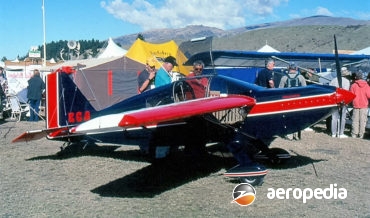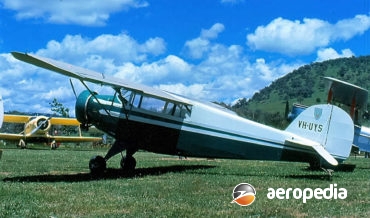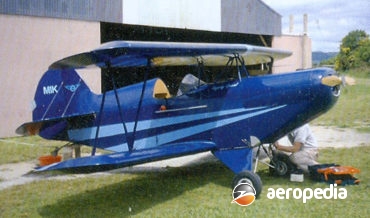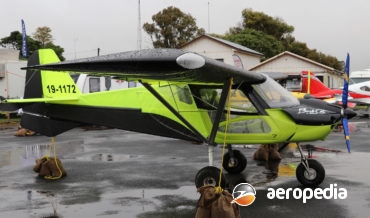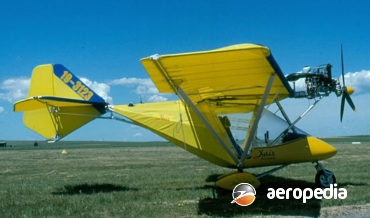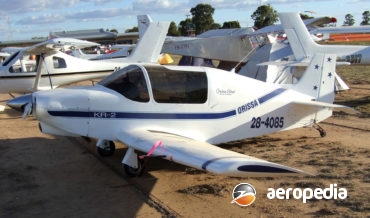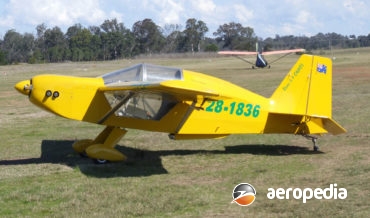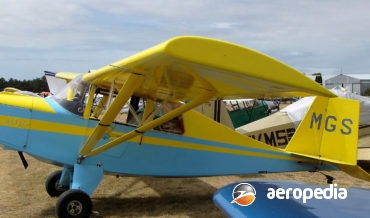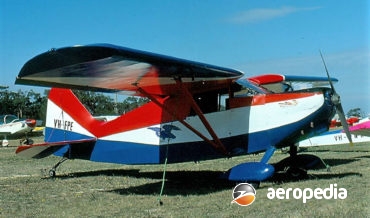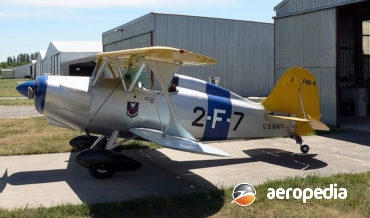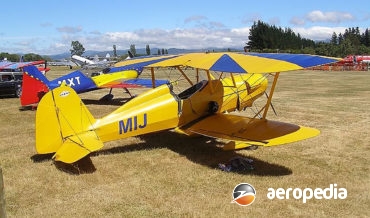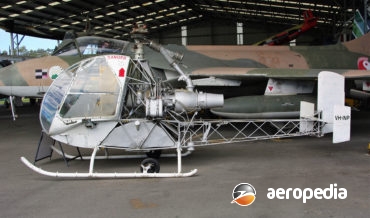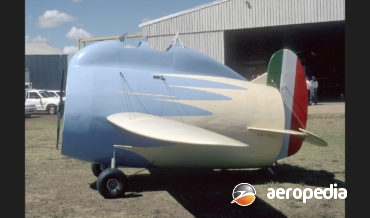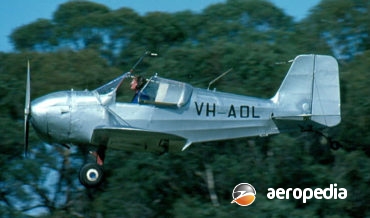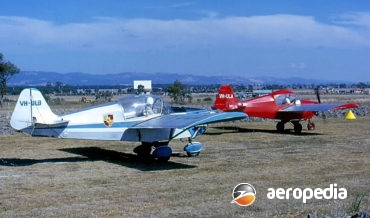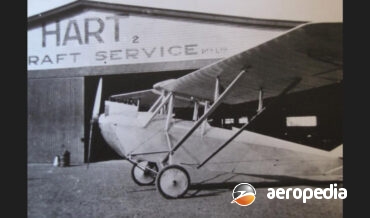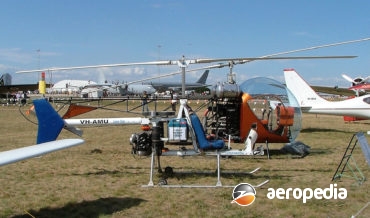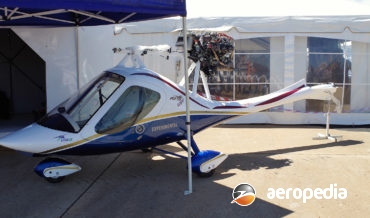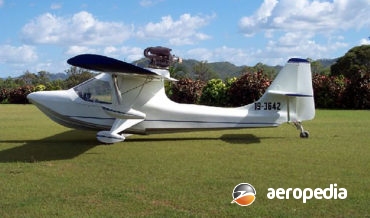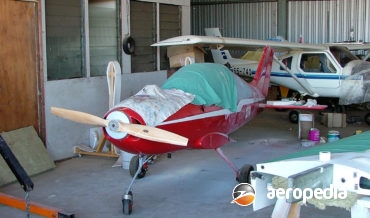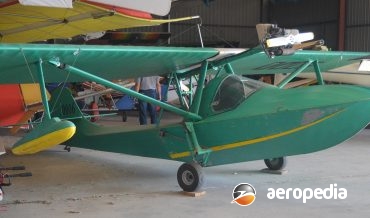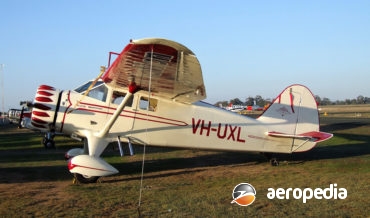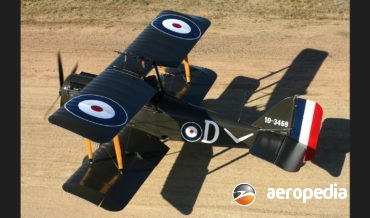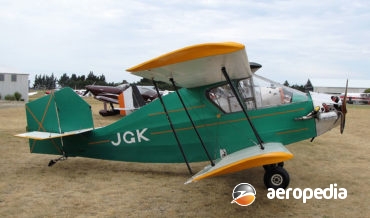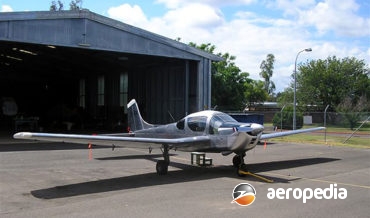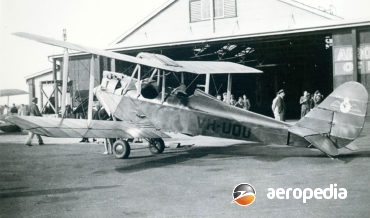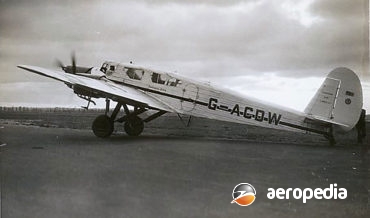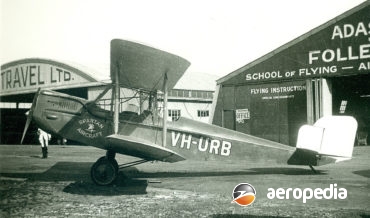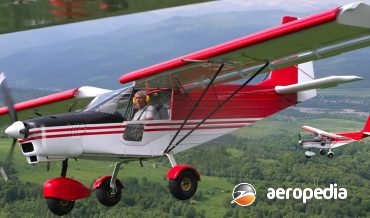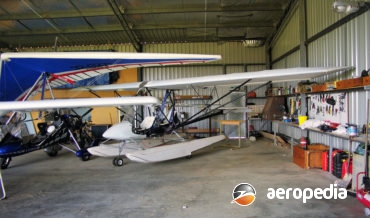All Contents
Contents
The Rans series of aircraft is produced by Rans Inc at Hays in Kansas, USA.
David C. Eyre
- May 8, 2019
The S.12 Airaile is one of a range of light aircraft designs released by Rans Inc of Hays, Kansas.
David C. Eyre
- May 8, 2019
In 1928 R A Rearwin started to design and produce a series of light aircraft for the commercial market which culminated in the Sportster series of two-seat, light touring monoplanes.
David C. Eyre
- May 8, 2019
Rag Wing Aircraft provides plans for aircraft to be built by the amateur builder and the designs use simple construction techniques using locally available materials.
David C. Eyre
- May 8, 2019
The RW19 Storch is one of a series of ultra-light aircraft designed by Roger Mann as a light sporting aircraft, plans being supplied.
David C. Eyre
- May 8, 2019
The Cheetah, produced in South Africa by Rainbow Aircraft at Springs Airfield, Springs, is a two-seat light sporting monoplane of robust construction.
David C. Eyre
- May 8, 2019
The BushCat is a two-seat side-by-side strut –braced high-wing monoplane designed to meet US LSA regulations and was developed from the Company’s earlier design, the Rainbow aircraft Cheetah XLS.
David C. Eyre
- May 8, 2019
The X-Air was designed in France and launched on the market in kit form in 1993. It is a conventional three axis control aircraft which is usually registered in the microlight / ultralight category.
David C. Eyre
- May 8, 2019
Rand Robinson Engineering Inc of Huntington Beach, California, was formed in the United States in 1974 to market plans for the KR-1 single-seat, and KR-2 two-seat series of amateur constructed aircraft.
David C. Eyre
- May 8, 2019
The S-9 Chaos, produced by Rans Inc of Hays, Kansas, was introduced to the company’s range of light sporting aircraft in 1986.
David C. Eyre
- May 8, 2019
The Ragabond is a scale single-seat replica of the popular Piper Vagabond produced in the 1950s and is produced by RagWing Plans Service of Craytonville Airfield, South Carolina.
David C. Eyre
- May 8, 2019
The Syndetta is a single-seat ultra-light aircraft of tubular steel construction with fabric covering designed and built by Joseph Kunovsky of Winston Hills, a suburb of Sydney, in the 1990s.
David C. Eyre
- May 8, 2019
The first aircraft in the Skycoupe series, the SA-7, was not originally planned for production, but interest in the aircraft forced the designer, Ray Stits, to revise his plans.
David C. Eyre
- May 8, 2019
The GlaStar Sportsman, as it was initially known, has been described as the ideal small family, STOL go anywhere aeroplane.
David C. Eyre
- May 8, 2019
The Stolp SA-100 Starduster was designed by Louis Stolp in the United States as a single-seat light sporting biplane and was aimed at the popular sport aviation market in America at that time.
David C. Eyre
- May 8, 2019
The SA-500, sometimes known as the Starlet, or the Sprite, is built and marketed by Stolp Starduster Corp in Oroville, California.
David C. Eyre
- May 8, 2019
The Acroduster Too is one of a series of light sporting aircraft produced by Stolp Starduster Corp of Oroville, California and is a fully aerobatic two-seat aircraft stressed to +9 and -9 G.
David C. Eyre
- May 8, 2019
In 1957 Louis Stolp and George Adams designed and built a light single-seat sporting biplane known as the Starduster, and subsequently marketed plans, components and basic materials to amateur constructors.
David C. Eyre
- May 8, 2019
Ernest J Strumey was born in 1890 in Singleton, NSW, In about 1912 he designed and built a pedal powered aircraft as part of his interest in aviation but this was not particularly successful.
David C. Eyre
- May 8, 2019
The Djinn was the first jet driven helicopter in the world, being designed by the Sud-Ouest concern which subsequently became part of Sud Aviation when the French aircraft industry was nationalised.
David C. Eyre
- May 8, 2019
In about 1932 an unusual aircraft was designed by Italy in Mr Luigi Stipa and built by Caproni, at one stage being claimed to be the first Italian jet-aircraft to fly.
David C. Eyre
- May 8, 2019
The 2/3 Spitfire, as it was initially known, has been produced by the Supermarine Aircraft Factory at Archerfield, QLD and was a fairly new foray into producing scale replicas of well known warbirds in Australasia.
David C. Eyre
- May 8, 2019
The prototype of the Playboy, the SA-3A, was designed by the well-known American light aircraft designer, Ray Stits.
David C. Eyre
- May 8, 2019
The Stits SA-5A of early 1955 was the first of the Flut-R-Bug series, this being a single-engine single-seat sporting aircraft designed around a converted Volkswagen four-cylinder powerplant.
David C. Eyre
- May 8, 2019
In the 1930s David Staig, an automobile engineer from Surrey Hills in Melbourne, obtained a pilots licence and decided to build his own aircraft.
David C. Eyre
- May 8, 2019
The GyroBee was designed by Ralph Taggart of the Michigan State University and made available as free documentation to interested builders, and in due course was produced in kit form by Star Bee Gyro of Worcester, Massachusetts for amateur builders.
David C. Eyre
- May 8, 2019
The Lonestar is a single-seat basic utility helicopter of all-metal construction marketed by Star Aviation Inc of New Braunfels in Texas, and is fitted with a 82-kw (110-hp) Hirth engine driving, via a chain, a composite main rotor.
David C. Eyre
- May 8, 2019
Built in Brazil in South America, the Starfox V6 Super is one of a number of light aircraft produced for the light aircraft market and more than 2,300 examples are said to have been built.
David C. Eyre
- May 8, 2019
The Sea Eagle was designed and built by William “Bill” Starke of Townsville, QLD and was flown by him in the initial performance trials.
David C. Eyre
- May 8, 2019
The Starlite is a single-seat light sports aircraft designed by Mark Brown (who also designed the Aero Design Pulsar).
David C. Eyre
- May 8, 2019
The Sea Hawk was designed by Mr J Stevens in Queensland for the ultra-light amateur-built market and is the culmination of a number of designs he has produced and built over the years.
David C. Eyre
- May 8, 2019
As well as developing the tri-motor Model A, Stinson Aircraft was also working in 1933 on the SR Reliant series of light passenger monoplanes.
David C. Eyre
- May 8, 2019
Squadron Aviation in Ohio in the United States produced a number of scale replicas of World War I fighters, including the Spad XIII, Fokker D-VII and the RAF SE-5a.
David C. Eyre
- May 8, 2019
Sorrell Aviation in the United States produced a series of ultralight aircraft, including the Guppy and the Hiperlight.
David C. Eyre
- May 8, 2019
Southern Cross Aviation Ltd was formed in Toowoomba, QLD, in 1957 to explore the feasibility of designing and manufacturing a light aircraft in Australia to compete against the American imports of Cessna and Piper.
David C. Eyre
- May 8, 2019
The British light aircraft manufacturing company, Simmonds Aircraft Ltd, underwent some changes in 1930 and became Spartan Aircraft Ltd and produced aircraft initially at its Weston, Southampton facility, before moving to East Cowes on the Isle of Wight on 20 February 1931.
David C. Eyre
- May 8, 2019
The Cruiser was a three-engine low-wing cantilever monoplane with a crew of two and seating six passengers.
David C. Eyre
- May 8, 2019
Produced as a successor to the Simmonds Spartan, between 1930 and 1935 Spartan Aircraft Ltd constructed a total of twenty-six examples of its Three-Seater, the first two being completed at Southampton, and the remainder at the company’s new facility at East Cowes on the Isle of Wight.
David C. Eyre
- May 8, 2019
The SP-30 is a two-seat light sporting and training aircraft manufactured in Russia by Spectr Aero and is described as an upgrade and development of the Zenair CH-701 aircraft series with changes aimed at improving its performance and ability to meet requirements in the light-aviation field in Russia.
David C. Eyre
- May 8, 2019
Designed and developed in Canada by Spectrum, the Beaver is a strut-braced high-wing monoplane of aluminium tube construction with double surface Dacron covering, and with a Mylar reinforced leading edge.
David C. Eyre
- May 8, 2019
Recent Comments
Archives
Categories
- No categories
Categories
- No categories
Latest Posts
Newsletter

